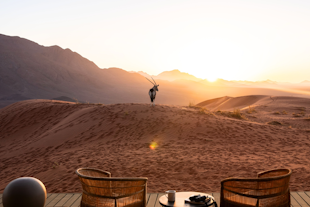
Activities for special occasions
May your next celebration be memorable



Stealing top prize for Bhutan’s most picturesque region, Gangtey, or the Phobjikha Valley, is the Bhutan of postcards (if there were any). Flanked by the towering Black Mountains, the enormous glacial valley is completely free of trees and is instead, a quilt of bucolic fields, farmed by rosy-cheeked villagers and criss-crossed by epic hiking trails. Surveying the scene is the Gangtey Monastery. Perched high up in hills, it’s an important outpost for Nyingma Buddhism, the oldest of all the Tibetan schools, and a dawn visit in summer will reveal the monks chanting their morning prayers and playing marbles. In winter, it’s all about the black-necked cranes. Celebrated across the country as symbols of peace and longevity, the birds migrate to the valley to escape the Tibetan chill and their arrival is said to announce a good harvest. The best perch to spot them is probably the Gangtey Nature Trail (pack your walking boots) but the RSPN Crane Centre has a good selection of telescopes for a closer look.
Beneath the gaze of the soaring Black Mountains, Gangtey is a sublimely quaint valley where you can simply soak up the views, witness the traditional morning alms-giving and visit the revered Gangtey Monastery, which is an integral part of one of the oldest Tibetan schools of Buddhism. Then again, you might prefer to explore the area on scenic walks - and there are plenty! Between November and February, make the trek to Phobjikha Valley, which welcomes black-necked cranes that are said to signal peace and good harvests.
The valley is one of Bhutan’s most traditional areas. Electricity only arrived in recent years and life is quaint, happy and traditional. Fascinating – and incredibly good for the soul.
If the Lama, His Eminence Gangteng Tulku Rinpoche, is in residence at the Gangtey Monastery, try and arrange for a once-in-a-lifetime meditation session.
The best time to see the cranes is in winter, but it can also be the coldest. So cold, in fact, that many villagers decamp to lower warmer climes. Be warned!
Jan
Feb
Mar
Apr
May
Jun
Jul
Aug
Sep
Oct
Nov
Dec
Dry Season
Dry Season
Dry Season
Dry Season
Dry Season
Wet Season
Wet Season
Wet Season
Wet Season
Dry Season
Dry Season
Dry Season